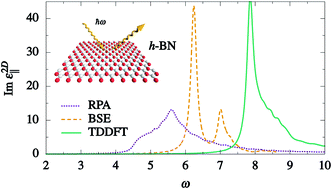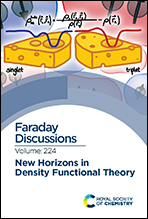Optical spectra of 2D monolayers from time-dependent density functional theory
Abstract
The optical spectra of two-dimensional (2D) periodic systems provide a challenge for time-dependent density-functional theory (TDDFT) because of the large excitonic effects in these materials. In this work we explore how accurately these spectra can be described within a pure Kohn–Sham time-dependent density-functional framework, i.e., a framework in which no theory beyond Kohn–Sham density-functional theory, such as GW, is required to correct the Kohn–Sham gap. To achieve this goal we adapted a recent approach we developed for the optical spectra of 3D systems [S. Cavo, J. A. Berger and P. Romaniello, Phys. Rev. B, 2020, 101, 115109] to those of 2D systems. Our approach relies on the link between the exchange–correlation kernel of TDDFT and the derivative discontinuity of ground-state density-functional theory, which guarantees a correct quasi-particle gap, and on a generalization of the polarization functional [J. A. Berger, Phys. Rev. Lett., 2015, 115, 137402], which describes the excitonic effects. We applied our approach to two prototypical 2D monolayers, h-BN and MoS2. We find that our protocol gives a qualitatively good description of the optical spectrum of h-BN, whereas improvements are needed for MoS2 to describe the intensity of the excitonic peaks.

- This article is part of the themed collection: New horizons in density functional theory


 Please wait while we load your content...
Please wait while we load your content...